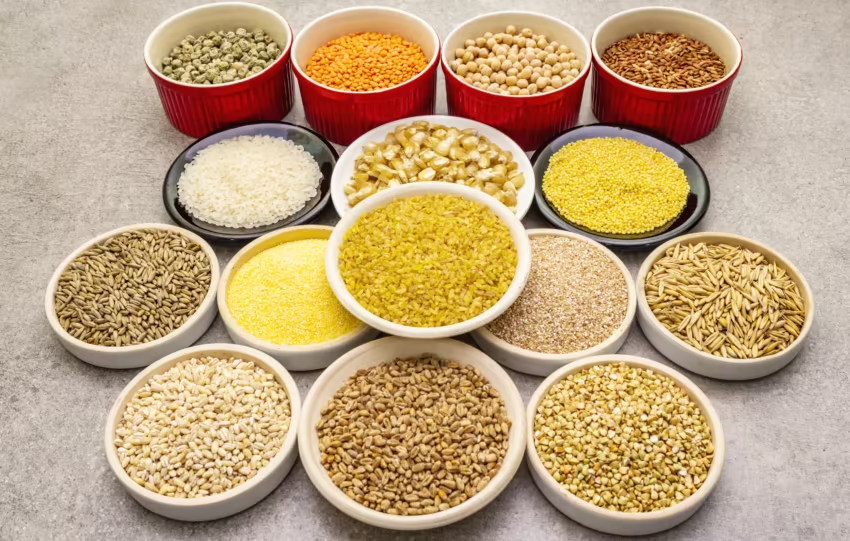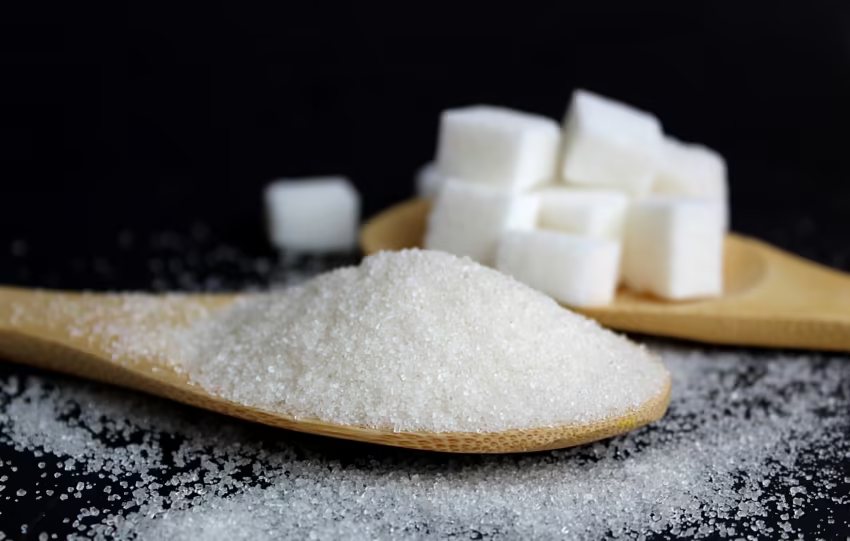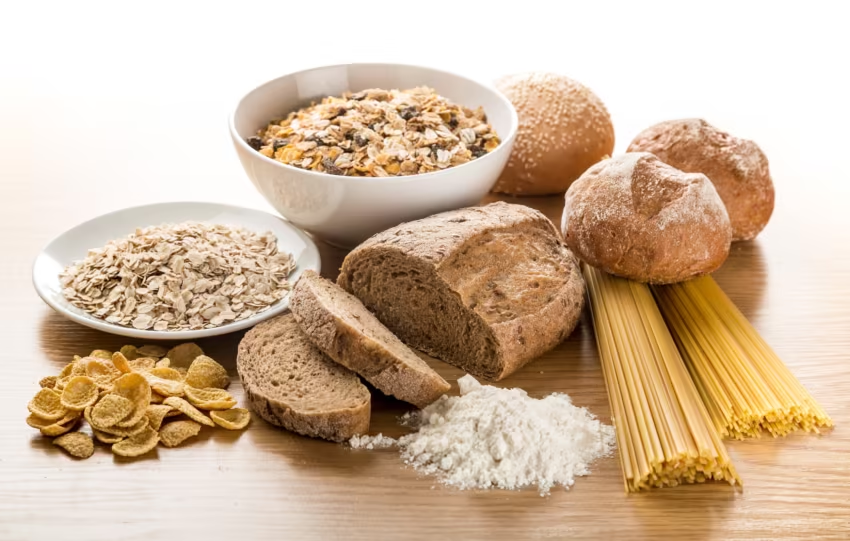The Role of Fiber: Why Complex Carbohydrates Are Key to Digestive Health
Dietary fiber, a non-digestible component of complex carbohydrates, is a nutritional powerhouse often overlooked in modern diets. Found in whole grains, legumes, fruits, and vegetables, fiber plays a critical role in maintaining digestive health by promoting bowel regularity, supporting gut microbiota, and preventing chronic diseases. Unlike refined carbohydrates, which are stripped of fiber and nutrients, complex carbohydrates deliver fiber’s full benefits, making them essential for a healthy gut and overall well-being. This 5,000-word article explores the science behind fiber, its types, mechanisms, health impacts, and practical strategies for increasing intake. Written for the general public, it provides clear, evidence-based guidance to highlight why fiber-rich complex carbohydrates are key to digestive health.
Introduction to Dietary Fiber
Carbohydrates are a primary energy source, providing 4 kcal/g, but not all carbohydrates are created equal. Complex carbohydrates, including starches and fiber, differ from simple sugars in their structure and health effects. Dietary fiber, a non-digestible polysaccharide, is a hallmark of complex carbohydrates found in plant-based foods like oats, lentils, and broccoli. Unlike starches and sugars, which are broken down into glucose, fiber passes through the digestive tract largely intact, exerting profound effects on gut function, metabolism, and disease prevention.
Fiber’s importance stems from its ability to regulate digestion, feed beneficial gut bacteria, and modulate systemic health. Low fiber intake, common in diets high in refined carbohydrates, is linked to digestive disorders, obesity, and chronic diseases. In contrast, fiber-rich diets are associated with reduced risks of colorectal cancer, heart disease, and diabetes. This article delves into the types of fiber, their physiological roles, health benefits, and practical ways to incorporate fiber-rich complex carbohydrates into daily meals, empowering readers to optimize their digestive health.
Types of Dietary Fiber
Dietary fiber is classified based on its solubility, viscosity, and fermentability, each contributing uniquely to health.
Soluble Fiber
- Properties: Dissolves in water, forming a gel-like substance. It is viscous and fermentable by gut bacteria.
- Sources: Oats, barley, legumes, apples, carrots, psyllium husk.
- Examples:
- Beta-glucan: Found in oats and barley, known for cholesterol reduction.
- Pectin: Found in fruits, stabilizes blood sugar.
- Inulin: A prebiotic in chicory and onions, supports gut bacteria.
Insoluble Fiber
- Properties: Does not dissolve in water, adding bulk to stool. It is less fermentable but promotes gut motility.
- Sources: Whole wheat, bran, vegetables (e.g., celery, broccoli), fruit skins.
- Examples:
- Cellulose: Structural component of plant cell walls, found in whole grains.
- Hemicellulose: Found in bran, aids bowel regularity.
- Lignin: Found in woody vegetables, contributes to stool bulk.
Functional Fiber
- Definition: Isolated or synthetic fibers with proven health benefits (e.g., psyllium, guar gum).
- Uses: Added to foods or supplements to enhance fiber content.
Fermentable vs. Non-Fermentable Fiber
- Fermentable: Broken down by gut bacteria, producing short-chain fatty acids (SCFAs) like butyrate, acetate, and propionate (e.g., inulin, pectin).
- Non-Fermentable: Passes through the gut intact, adding bulk (e.g., cellulose).
| Fiber Type | Sources | Properties | Health Benefits |
| Soluble | Oats, Apples | Gel-forming, Fermentable | Lowers cholesterol, Stabilizes glucose |
| Insoluble | Whole Wheat, Broccoli | Bulking, Non-fermentable | Prevents constipation |
| Functional | Psyllium, Guar Gum | Added to foods | Enhances gut health |
Fiber and Digestive Health
Fiber’s primary role is to support the digestive system, from the stomach to the colon, through mechanical and microbial mechanisms.
Bowel Regularity
- Insoluble Fiber: Increases stool bulk and water content, softening stools and speeding transit time. This prevents constipation and reduces straining, lowering hemorrhoid and diverticulitis risk.
- Soluble Fiber: Absorbs water, forming a gel that softens stools, aiding regularity. A 2018 study found 10g daily fiber reduced constipation by 30%.
Gut Motility
Fiber stimulates peristalsis, the rhythmic contractions of the intestinal muscles. Insoluble fiber, like wheat bran, increases fecal mass, triggering stretch receptors in the colon to promote bowel movements. A 2020 trial showed 15g/day of bran fiber reduced transit time by 10–20 hours.
Gut Microbiome
- Prebiotic Effects: Fermentable fibers (e.g., inulin, beta-glucan) serve as food for beneficial gut bacteria (e.g., Bifidobacterium, Lactobacillus), increasing their abundance.
- SCFA Production: Bacterial fermentation produces SCFAs, which:
- Nourish colonocytes, maintaining gut barrier integrity.
- Reduce gut pH, inhibiting pathogenic bacteria.
- Modulate inflammation and appetite hormones (e.g., GLP-1, PYY).
- Microbiome Diversity: High-fiber diets increase microbial diversity, linked to reduced inflammation and better metabolic health, per 2019 studies.
Gut Barrier Function
SCFAs strengthen the gut mucosa, preventing “leaky gut” and systemic inflammation. Butyrate, in particular, supports tight junction proteins, reducing gut permeability, per 2021 research.
Digestive Disorders
- Constipation: Fiber increases stool frequency and ease of passage. A 2017 meta-analysis found 25g/day reduced constipation symptoms by 40%.
- Diverticulitis: High-fiber diets reduce diverticular disease risk by 41%, per 2018 cohort studies, by lowering intraluminal pressure.
- Irritable Bowel Syndrome (IBS): Soluble fiber (e.g., psyllium) alleviates IBS symptoms like bloating, while insoluble fiber may worsen symptoms in some cases.
- Inflammatory Bowel Disease (IBD): Fermentable fibers may reduce inflammation in Crohn’s disease and ulcerative colitis by boosting SCFA production.
Complex Carbohydrates vs. Refined Carbohydrates
Complex carbohydrates, rich in fiber, contrast sharply with refined carbohydrates, which lack fiber and nutrients.
Complex Carbohydrates
- Composition: Include starches and fiber, found in whole grains (oats, quinoa), legumes (lentils, chickpeas), and vegetables.
- Nutritional Profile: High in fiber (3–10g/100g), vitamins (B vitamins, vitamin E), minerals (magnesium, iron), and phytochemicals.
- Glycemic Index (GI): Low to medium (e.g., oats GI 55), promoting stable blood sugar.
- Health Impact: Support digestive health, weight control, and chronic disease prevention.
Refined Carbohydrates
- Composition: Stripped of bran and germ, leaving starchy endosperm (e.g., white bread, white rice).
- Nutritional Profile: Low in fiber (<1g/100g), vitamins, and minerals; often fortified with synthetic nutrients.
- Glycemic Index: High (e.g., white bread GI 75), causing blood sugar spikes.
- Health Impact: Linked to constipation, obesity, and increased risk of diabetes and heart disease.
| Carbohydrate Type | Fiber (g/100g) | GI | Health Effects |
| Complex (Whole Grains) | 3–10 | 50–55 | Supports gut health, Reduces disease risk |
| Refined | <1 | 70–89 | Promotes digestive issues, Chronic diseases |
Mechanisms of Fiber in Digestive Health
Fiber exerts its effects through physical, biochemical, and microbial mechanisms.
Physical Effects
- Stool Bulking: Insoluble fiber increases fecal mass, stimulating bowel movements. A 10g increase in fiber adds ~50g to stool weight, per 2016 studies.
- Water Retention: Soluble fiber holds water, softening stools and easing passage.
- Gastric Emptying: Fiber slows gastric emptying, enhancing satiety and stabilizing glucose absorption, per 2019 research.
Biochemical Effects
- Bile Acid Binding: Soluble fiber binds bile acids in the intestine, promoting their excretion and lowering cholesterol synthesis in the liver.
- Glucose Regulation: Fiber slows carbohydrate digestion, reducing postprandial glucose spikes and insulin demand, improving insulin sensitivity.
Microbial Effects
- Fermentation: Gut bacteria ferment fiber, producing SCFAs that lower gut pH, inhibit pathogens, and support colon health.
- Hormonal Regulation: SCFAs stimulate GLP-1 and PYY, reducing appetite and improving glucose metabolism, per 2020 studies.
Health Benefits Beyond Digestion
Fiber’s benefits extend beyond the gut, impacting systemic health.
Cardiovascular Health
- Cholesterol Reduction: Soluble fiber lowers LDL cholesterol by 5–10% by binding bile acids, per 2017 meta-analyses. Beta-glucan in oats is particularly effective.
- Blood Pressure: High-fiber diets reduce systolic blood pressure by 2–4 mmHg, per 2018 studies, due to potassium and magnesium.
- Heart Disease Risk: A 2019 study found 25–30g/day of fiber reduced cardiovascular mortality by 15–30%.
Type 2 Diabetes Prevention
- Insulin Sensitivity: Low-GI, high-fiber foods improve beta-cell function, reducing diabetes risk by 20–30%, per 2020 cohort studies.
- Blood Sugar Control: Fiber slows glucose absorption, lowering HbA1c by 0.3–0.5% in diabetic patients.
Weight Management
- Satiety: Fiber increases fullness, reducing calorie intake by 100–200 kcal/day, per 2018 trials.
- Energy Density: High-fiber foods (e.g., vegetables) are low in calories, aiding weight loss. A 2021 study showed 14g/day fiber increase led to 1.9 kg weight loss over 6 months.
Colorectal Cancer Prevention
- Mechanisms: Fiber dilutes carcinogens, reduces intestinal transit time, and produces SCFAs that inhibit tumor growth.
- Evidence: A 2016 meta-analysis found 10g/day fiber reduced colorectal cancer risk by 10%.
Immune Health
SCFAs modulate immune responses, reducing systemic inflammation and supporting gut-associated lymphoid tissue (GALT), per 2020 research.
Mental Health
The gut-brain axis links fiber to mood and cognition. SCFAs reduce neuroinflammation, and high-fiber diets are associated with lower depression risk, per 2019 studies.
Risks and Considerations
While fiber is beneficial, excessive or improper intake can pose challenges.
Excessive Fiber Intake
- Symptoms: Overconsumption (>70g/day) may cause bloating, gas, or abdominal pain, especially if increased rapidly.
- Nutrient Absorption: Very high fiber may bind minerals (e.g., calcium, iron), reducing absorption, though this is rare in balanced diets.
Low Fiber Diets
- Constipation: Diets high in refined carbs lack fiber, slowing gut motility and increasing diverticulosis risk.
- Microbiome Imbalance: Low fiber reduces SCFA production, promoting inflammation and metabolic disorders.
Individual Variability
- IBS and IBD: Some individuals with IBS tolerate soluble fiber better than insoluble. IBD patients may need low-fiber diets during flares.
- FODMAP Sensitivity: Fermentable fibers (e.g., inulin) may exacerbate bloating in sensitive individuals.
Hydration
Fiber requires adequate water to function effectively. Dehydration with high fiber intake can worsen constipation.
Emerging Research
Recent studies highlight novel aspects of fiber:
- Gut-Brain Axis: SCFAs influence neurotransmitter production (e.g., serotonin), potentially improving mood and cognition, per 2021 research.
- Personalized Nutrition: Gut microbiota composition affects fiber fermentation, suggesting tailored fiber recommendations.
- Functional Fibers: Isolated fibers like resistant starch show promise for glycemic control and weight loss.
- Microbiome Therapies: Fiber supplements may enhance microbial diversity in low-fiber populations, per 2020 trials.
Dietary Recommendations
The Dietary Guidelines for Americans (2020–2025) and nutritional research provide clear guidance:
- Fiber Intake: 25g/day for women, 38g/day for men, from diverse sources.
- Complex Carbohydrates: Prioritize whole grains (oats, quinoa), legumes (lentils, beans), fruits (apples, berries), and vegetables (broccoli, carrots).
- Whole Grains: At least 3 servings/day (e.g., ½ cup cooked oats, 1 slice whole-grain bread).
- Limit Refined Carbs: Minimize white bread, white rice, and sugary foods lacking fiber.
- Gradual Increase: Add 5g fiber/week to avoid digestive discomfort, with adequate hydration.
- Balanced Meals: Combine fiber-rich carbs with proteins (e.g., eggs) and healthy fats (e.g., olive oil).
| Food | Fiber (g/100g) | Serving Size | Fiber per Serving (g) | Benefits |
| Oats | 10.6 | ½ cup dry (40g) | 4.2 | Beta-glucan, Satiety |
| Lentils | 7.9 | ½ cup cooked (100g) | 7.9 | Protein, Fiber |
| Broccoli | 2.6 | 1 cup (90g) | 2.3 | Vitamins, Fiber |
| Apple | 2.4 | 1 medium (182g) | 4.4 | Pectin, Antioxidants |
Practical Tips for Increasing Fiber
- Start with Breakfast: Choose oatmeal or whole-grain cereal with berries.
- Swap Refined for Whole: Replace white rice with brown rice or quinoa.
- Add Legumes: Include beans or lentils in soups, salads, or side dishes.
- Snack Smart: Opt for high-fiber snacks like popcorn, nuts, or carrot sticks.
- Eat the Skin: Consume fruit and vegetable skins (e.g., apples, potatoes) for extra fiber.
- Read Labels: Select products with >3g fiber/serving and “whole grain” as the first ingredient.
- Hydrate: Drink 8–10 cups of water daily to support fiber’s effects.
FAQs
Q1: What is dietary fiber, and why is it important for digestion?
A1: Fiber is a non-digestible carbohydrate that promotes bowel regularity, supports gut bacteria, and prevents digestive disorders like constipation and diverticulitis.
Q2: How do soluble and insoluble fiber differ?
A2: Soluble fiber dissolves in water, lowering cholesterol and stabilizing glucose; insoluble fiber adds bulk, preventing constipation.
Q3: Can fiber help with weight management?
A3: Yes, fiber increases satiety and reduces calorie intake, aiding weight loss by 1–2 kg over 6 months with 14g/day increase.
Q4: What are the best sources of dietary fiber?
A4: Whole grains (oats, quinoa), legumes (lentils, beans), fruits (apples, berries), and vegetables (broccoli, carrots) are rich in fiber.
Q5: Can too much fiber cause digestive issues?
A5: Yes, >70g/day or rapid increases may cause bloating or gas. Gradually increase fiber and stay hydrated.
Q6: How does fiber benefit the gut microbiome?
A6: Fermentable fiber feeds beneficial bacteria, producing SCFAs that support gut health and reduce inflammation.
Q7: Are refined carbohydrates a good source of fiber?
A7: No, refined carbs (e.g., white bread) lack fiber, contributing to digestive issues and chronic diseases.
Q8: Can fiber reduce the risk of colorectal cancer?
A8: Yes, 10g/day of fiber reduces colorectal cancer risk by 10% by diluting carcinogens and producing SCFAs.
Q9: Is fiber safe for people with IBS or IBD?
A9: Soluble fiber (e.g., psyllium) is often beneficial, but insoluble fiber may worsen symptoms. Consult a dietitian for personalized advice.
Q10: How can I increase fiber without discomfort?
A10: Add 5g/week, choose diverse sources, drink plenty of water, and pair with balanced meals to minimize bloating.
Conclusion
Dietary fiber, a vital component of complex carbohydrates, is indispensable for digestive health and overall well-being. By promoting bowel regularity, nurturing the gut microbiome, and reducing risks of chronic diseases like colorectal cancer, heart disease, and diabetes, fiber stands as a cornerstone of a healthy diet. Unlike refined carbohydrates, which lack fiber and contribute to digestive and metabolic issues, fiber-rich foods like whole grains, legumes, fruits, and vegetables offer sustained health benefits. By aiming for 25–38g of fiber daily and prioritizing complex carbohydrates, individuals can transform their digestive health and enhance longevity. This article equips readers with the scientific knowledge and practical tools to embrace fiber as a key ally in their dietary journey.
Bibliography
- Slavin, J. (2013). Fiber and prebiotics: mechanisms and health benefits. Nutrients, 5(4), 1417–1435. https://doi.org/10.3390/nu5041417
- Holesh, J. E., Aslam, S., & Martin, A. (2023). Physiology, Carbohydrates. In StatPearls [Internet]. Treasure Island (FL): StatPearls Publishing. https://www.ncbi.nlm.nih.gov/books/NBK459280/
- Aune, D., Chan, D. S., Lau, R., Vieira, R., Greenwood, D. C., Kampman, E., & Norat, T. (2011). Dietary fibre, whole grains, and risk of colorectal cancer: systematic review and dose-response meta-analysis of prospective studies. BMJ, 343, d6617. https://doi.org/10.1136/bmj.d6617
- Mayo Clinic Staff. (2025). Dietary fiber: Essential for a healthy diet. Mayo Clinic. https://www.mayoclinic.org/healthy-lifestyle/nutrition-and-healthy-eating/in-depth/fiber/art-20043983
- Harvard T.H. Chan School of Public Health. (2023). Fiber. https://www.hsph.harvard.edu/nutritionsource/carbohydrates/fiber/
- Healthline. (2023). 22 High-Fiber Foods You Should Eat. https://www.healthline.com/nutrition/22-high-fiber-foods
- Eufic. (2020). What is dietary fibre and why is it important?. https://www.eufic.org/en/healthy-living/article/what-is-dietary-fibre-and-why-is-it-important
- Anderson, J. W., Baird, P., Davis Jr, R. H., Ferreri, S., Knudtson, M., Koraym, A., … & Williams, C. L. (2009). Health benefits of dietary fiber. Nutrition Reviews, 67(4), 188–205. https://doi.org/10.1111/j.1753-4887.2009.00189.x
Key Citations
- Fiber and prebiotics: mechanisms and health benefits
- Physiology, Carbohydrates – StatPearls
- Dietary fibre, whole grains, and risk of colorectal cancer
- Dietary fiber: Essential for a healthy diet – Mayo Clinic
- Fiber – Harvard T.H. Chan School of Public Health
- 22 High-Fiber Foods You Should Eat – Healthline
- What is dietary fibre and why is it important? – Eufic
- Health benefits of dietary fiber









